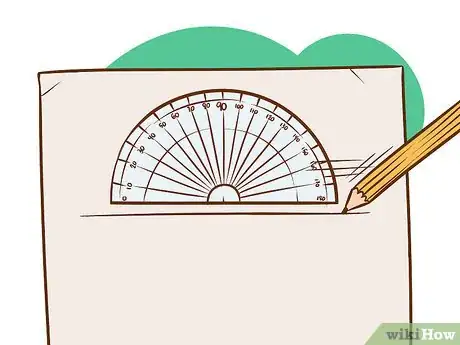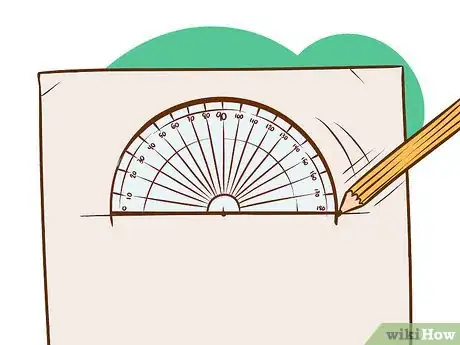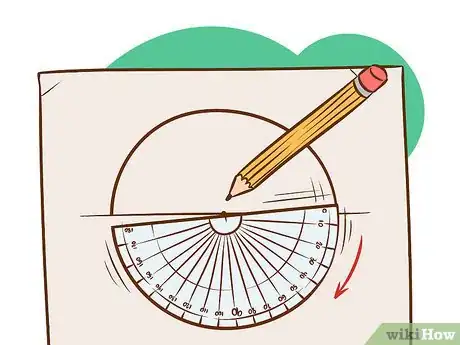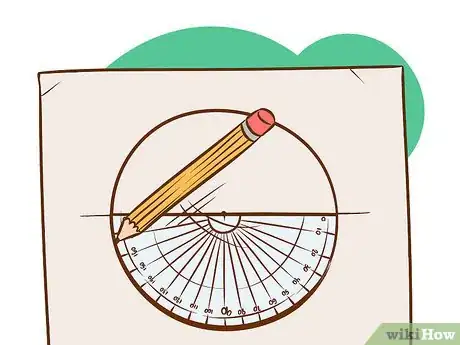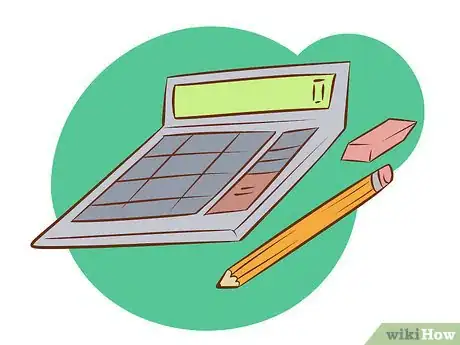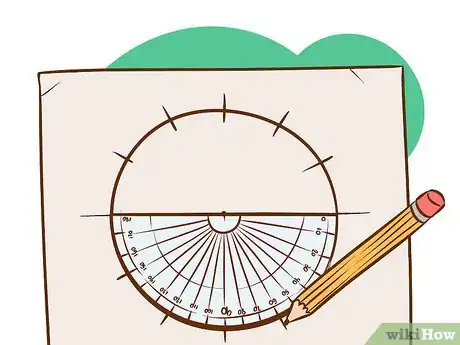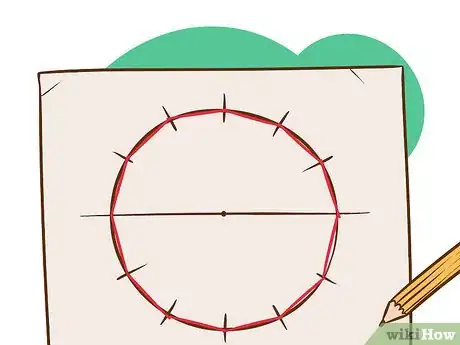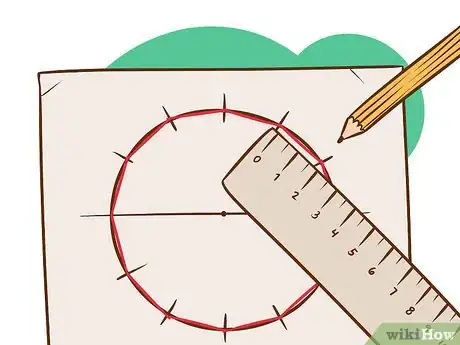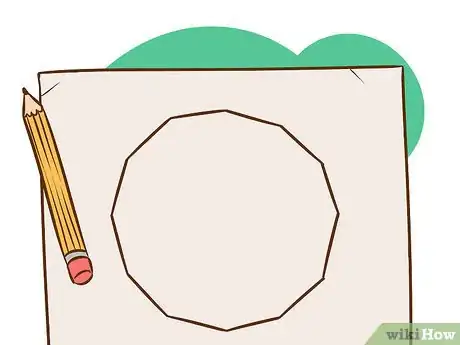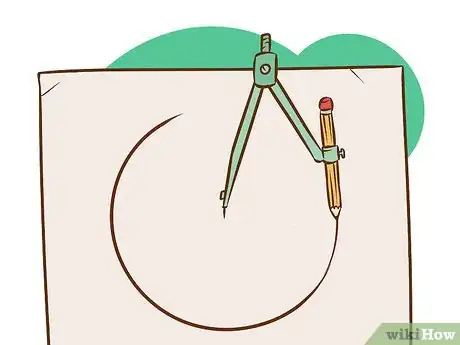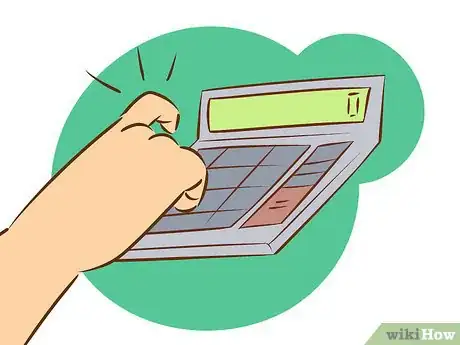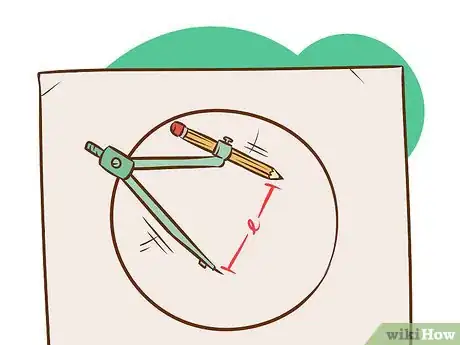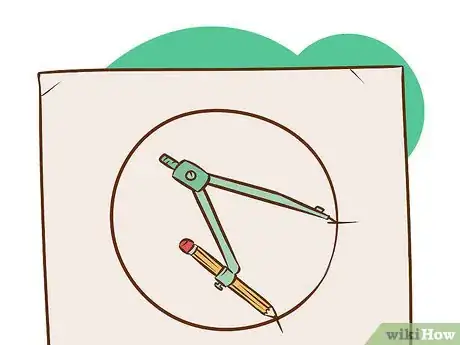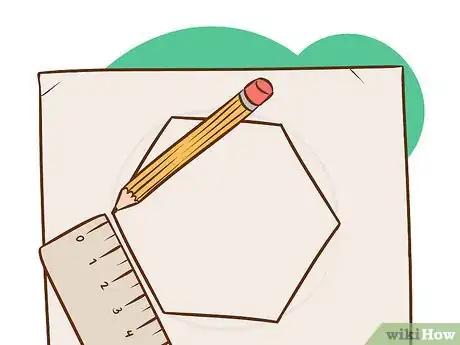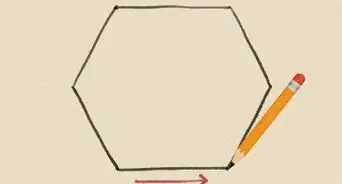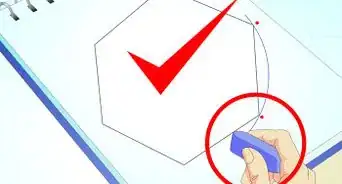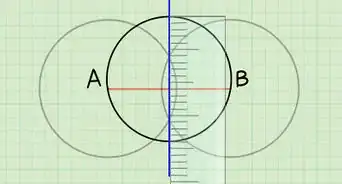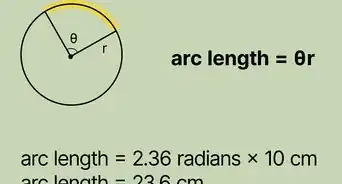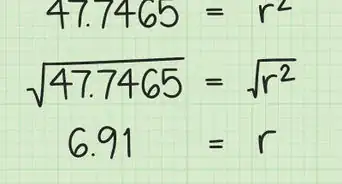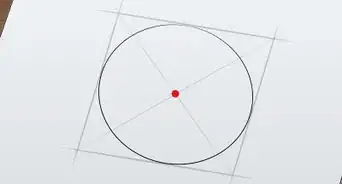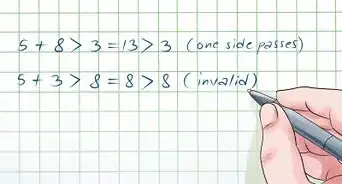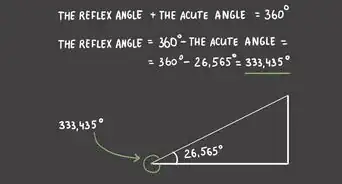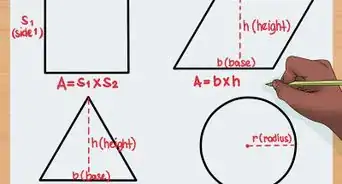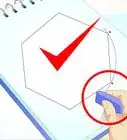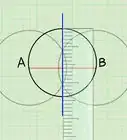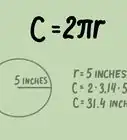X
wikiHow is a “wiki,” similar to Wikipedia, which means that many of our articles are co-written by multiple authors. To create this article, 18 people, some anonymous, worked to edit and improve it over time.
This article has been viewed 167,762 times.
Learn more...
Constructing regular polygons accurately is very significant in geometry and is easy to do. If you have ever wondered about how to construct regular polygons from a circle, you’re reading the right article.
Steps
Method 1
Method 1 of 2:
Using A Protractor
-
1Draw a straight line using the protractor. This will be the center line of your circle (dividing it into semi-circles).
-
2Align the protractor so that both 0° and 180° lie on the center line. Mark the center point.Advertisement
-
3Trace the semicircle along the protractor from 0 ° to 180°.
-
4Put the protractor on the other side of the center line, again with both the 0°and 180° marks on the center line.[1]
-
5Complete the circle by tracing along the protractor.
-
6Calculate the angle between adjacent vertices, α. Since a circle has 360°, divide 360° by n, the number of vertices (or sides) to get α.[2]
- α=360°/n
- α is the measured angle between lines drawn from the center of the circle to adjacent vertices.
- For a dodecagon, n=12. A dodecagon has 12 sides and 12 vertices, so 360° divided by 12 is 30°, and α=30°.
-
7Mark a point for each of the successive angles. Using the protractor, mark on the circumference of the circle all the multiples of angle α calculated above.[3]
-
8Join the points marked on the circle with a line segment.[4] For a dodecagon there should be 12 marks and 12 sides, because it has 12 vertices. Don’t overlap the line segments.
- If your points are outside of the circle, then simply mark another point along the radial line from the center onto the circle for each point and then join them.
-
9Check to see that the sides are the same length. If they are, you can erase the circumscribed circle.
-
10Finished.
Advertisement
Method 2
Method 2 of 2:
Using A Compass, Ruler and Calculator
-
1Draw a circle of the desired radius, r. Set your compass to the radius, r, and draw a circle.[5]
-
2Calculate the length, ℓ, of each side of the regular polygon of n sides.
- ℓ=2*r*sin(180/n)[6]
- 180/n is in degrees, so make sure your calculator is set for degrees, not radians.
-
3Set your compass to this length, ℓ. Be ultra-accurate and triple-check the measurement to ensure that it is as accurate as possible.
-
4Start from any point on the circle and mark an arc or line. Don't change the radius of your compass.
-
5Mark another arc or line on the circle. Continue the process until the arc or line touches the first point.
- Make sure your compass doesn't move!
-
6Join the lines/arcs accurately using a ruler.
- Check to see that the sides are identical in length.
- If they are, then you're finished. Erase the construction guide lines.
Advertisement
Community Q&A
-
QuestionHow can I obtain angle 32.75 on a protractor?
 DonaganTop AnswererWith a normal protractor, all you can do is measure extremely carefully.
DonaganTop AnswererWith a normal protractor, all you can do is measure extremely carefully. -
QuestionIf it is a pentagon, can I still use the compass method?
 DonaganTop AnswererYes.
DonaganTop AnswererYes. -
QuestionHow do I construct an eleven-sided pologon
 DonaganTop AnswererUse Method 1 above, except that the central angles used would not be 30°, they would be 360° divided by 11, or 32¾°.
DonaganTop AnswererUse Method 1 above, except that the central angles used would not be 30°, they would be 360° divided by 11, or 32¾°.
Advertisement
Things You’ll Need
Method One
- Protractor
- Calculator (optional, but may be necessary depending on the number of sides)
- Paper
- Tracing paper (optional)
- Pencil
- Pen - black, fine point (optional)
- Eraser
Method Two
- Compass
- Ruler
- Calculator
- Paper
- Tracing paper (optional)
- Pencil
- Pen - black, fine point (optional)
- Eraser
References
- ↑ https://chestofbooks.com/crafts/metal/Metal-Pattern/The-Construction-Of-Regular-Polygons-III-By-Means-Of-The-Protractor.html
- ↑ https://www.mathalino.com/reviewer/plane-geometry/regular-polygon
- ↑ https://arts.onehowto.com/article/how-to-draw-a-perfect-pentagon-9425.html
- ↑ https://arts.onehowto.com/article/how-to-draw-a-perfect-pentagon-9425.html
- ↑ https://www.mathsteacher.com.au/year8/ch10_geomcons/03_circles/comp.htm
- ↑ https://www.purebasic.com/documentation/reference/formulas.html
About This Article
Advertisement
